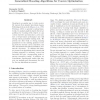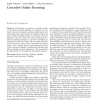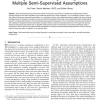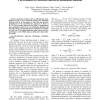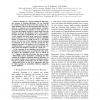174
click to vote
CVPR
2012
IEEE
13 years 3 months ago
2012
IEEE
Pedestrian detection from images is an important and yet challenging task. The conventional methods usually identify human figures using image features inside the local regions. In...
127
click to vote
ICASSP
2011
IEEE
14 years 4 months ago
2011
IEEE
Gradient boosting is a flexible machine learning technique that produces accurate predictions by combining many weak learners. In this work, we investigate its use in two applica...
CORR
2011
Springer
14 years 4 months ago
2011
Springer
Boosting is a popular way to derive powerful learners from simpler hypothesis classes. Following previous work (Mason et al., 1999; Friedman, 2000) on general boosting frameworks,...
118
click to vote
JRTIP
2010
14 years 7 months ago
2010
In this paper, we propose a cascaded version of the online boosting algorithm to speed-up the execution time and guarantee real-time performance even when employing a large number ...
137
click to vote
PAMI
2011
14 years 7 months ago
2011
—Semi-supervised learning concerns the problem of learning in the presence of labeled and unlabeled data. Several boosting algorithms have been extended to semi-supervised learni...
107
click to vote
BMVC
2010
14 years 10 months ago
2010
We introduce a novel bilinear boosting algorithm, which extends the multi-class boosting framework of JointBoost to optimize a bilinear objective function. This allows style param...
131
Voted
ICPR
2010
IEEE
14 years 10 months ago
2010
IEEE
Abstract--Boosting covariance data on Riemannian manifolds has proven to be a convenient strategy in a pedestrian detection context. In this paper we show that the detection perfor...
170
click to vote
FOCS
2010
IEEE
14 years 10 months ago
2010
IEEE
Boosting is a general method for improving the accuracy of learning algorithms. We use boosting to construct improved privacy-preserving synopses of an input database. These are da...
105
click to vote
IR
2010
14 years 11 months ago
2010
Abstract We present a new ranking algorithm that combines the strengths of two previous methods: boosted tree classification, and LambdaRank, which has been shown to be empiricall...
125
click to vote
PRL
2007
15 years 1 days ago
2007
Recently, boosting has come to be used widely in object-detection applications because of its impressive performance in both speed and accuracy. However, learning weak classifier...

